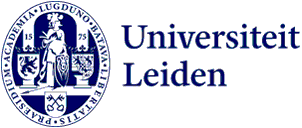
Who spoke what language in north-western sixth-century China?
Fifteen hundred years ago, the north-west of what we now call China was a jumble of peoples. How did those Indians, Khotanese and Tocharians influence each other and each other's languages? Associate professor Michaël Peyrot has been awarded an ERC grant of almost two million euros to unravel this 'web of contacts' with his project ‘The Silk Road Language Web’.
'We now know the Chinese province of Xinjiang mainly from the Uyghurs, who speak a Turkic language,' Peyrot explains, 'but around five hundred AD many other languages were spoken there. The Tocharians had come from the north, the Iranians from the west and the Indians from the south. They spoke Tocharian, Khotanese and Indic, all three Indo-European languages. I want to know how these influenced each other.'
Two factors make the area in China suitable for reconstructing what those influences looked like more than fifteen hundred years after the fact: the introduction of writing in the period Peyrot is researching and the bone-dry desert where those written texts were subsequently preserved. 'Paper is often very well preserved there,' Peyrot explains. 'At the same time, the manuscript remains of the Tochaars in particular are often very damaged. This still makes it very difficult to determine what the words mean and where certain fragments belong.'
Pieces of the puzzle
Peyrot and his team are going to use their knowledge of language structures to try to fit the pieces of the puzzle together. 'A lot of it can be solved by looking carefully at how a word is used. If you see what words surround it, you can deduce whether it should be, for example, a negative feeling or maybe a body part.' Translations can also help. If you compare Buddhist texts on the same topics, you can often establish what a word means. And once you know the meaning, you can start looking at where a word comes from. Has it come directly from the proto-language, the reconstructed common ancestor of the Indo-European languages? Or is it perhaps a loan word, having come via another language?'
Ultimately, those puzzle pieces help to figure out the order in which languages influenced each other. Peyrot explains: 'Once you have found some loan words, you can see if there is a pattern in them, so you can work out, for example, whether words were borrowed earlier or later. This helps you to roll back the contacts between languages in time. You can see which speakers arrived first and which speakers must have been influential later. So we can reconstruct from which side and when people came.'
'An answer in a few years'
Peyrot already has an inkling of where his research will take him: 'There has always been a lot of focus on the Tocharians. They have come from so far that they must be very important, was the idea. I think the speakers of Khotanese have played a much larger role in the development of north-west China than was previously thought, and the influence of the Tocharians, on the contrary, was much smaller. That exact relationship is one of the things we are going to investigate. For example, we don't know which of these two language groups arrived in that area earlier. For that, we have to go back to about a thousand BC. That's tricky, but by looking at language contacts with that historical perspective, we should have an answer in a few years.'
